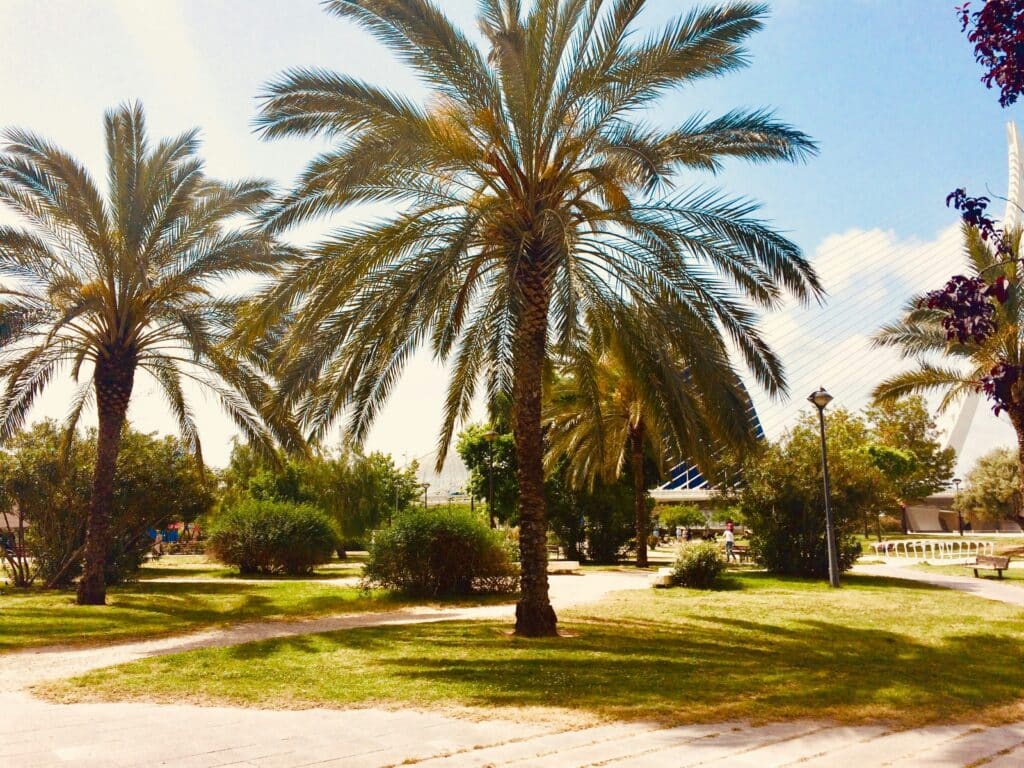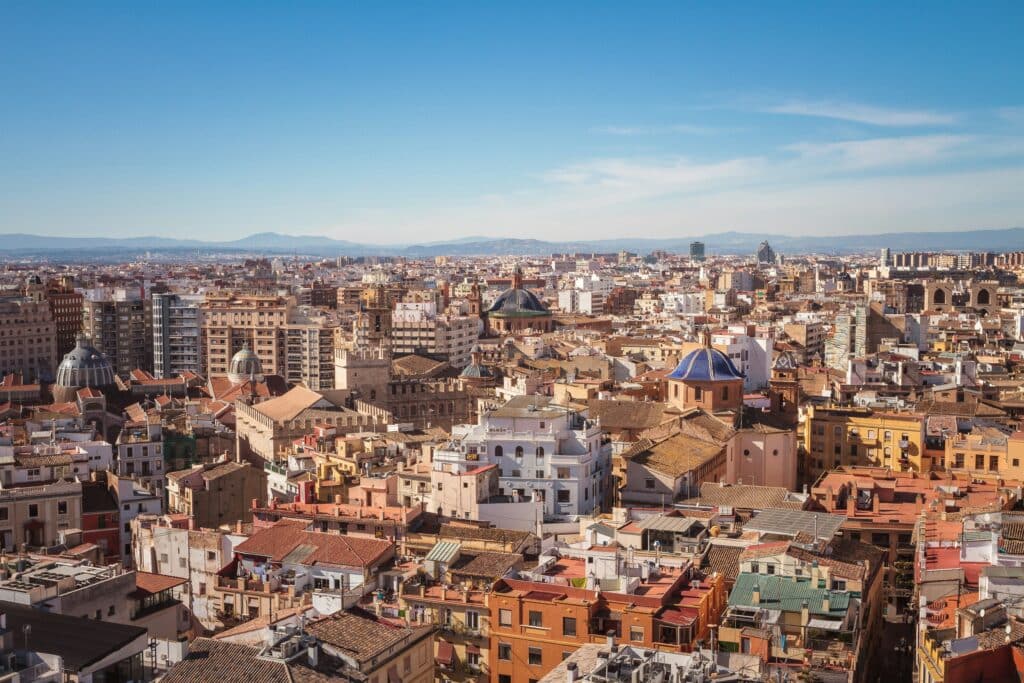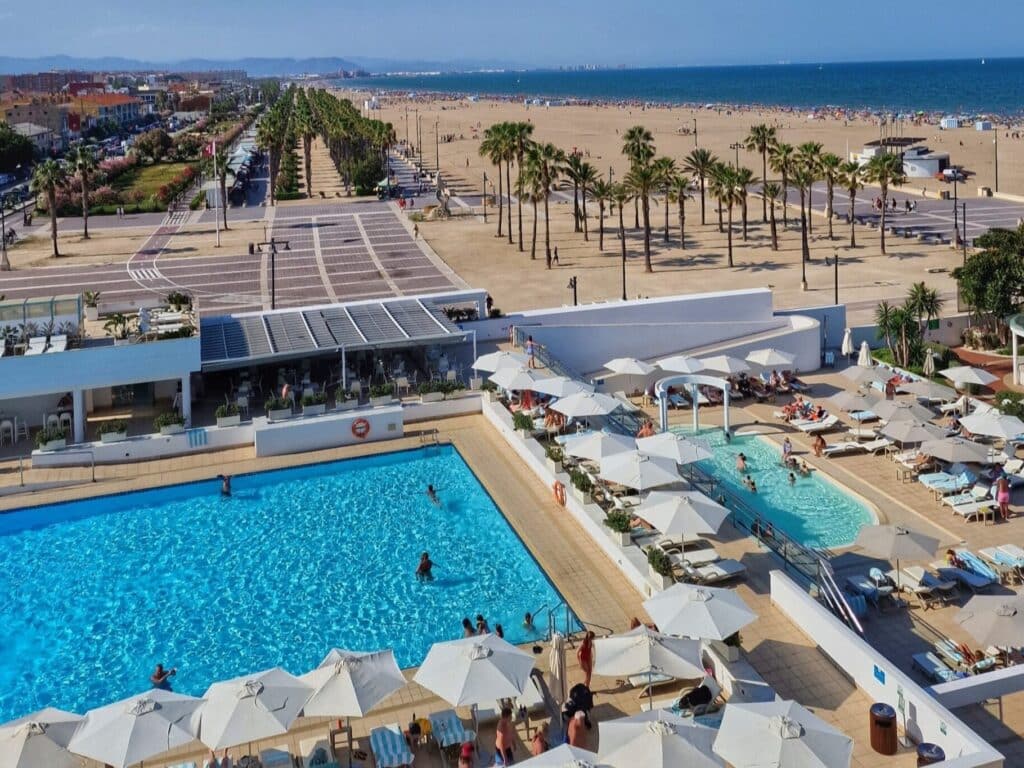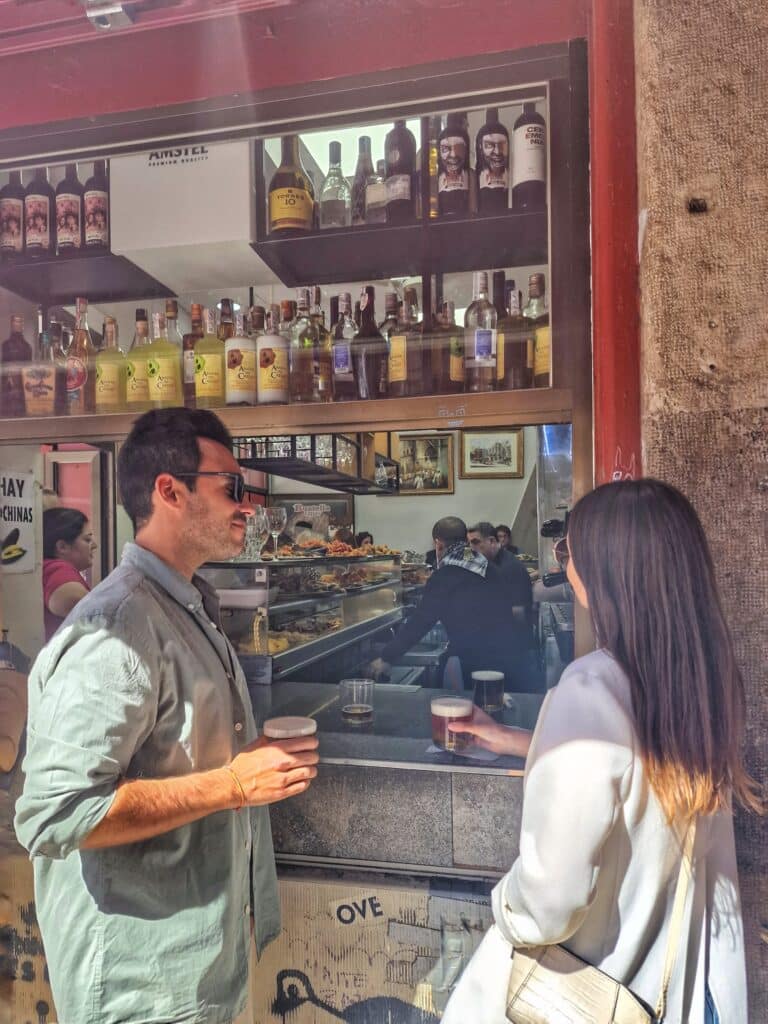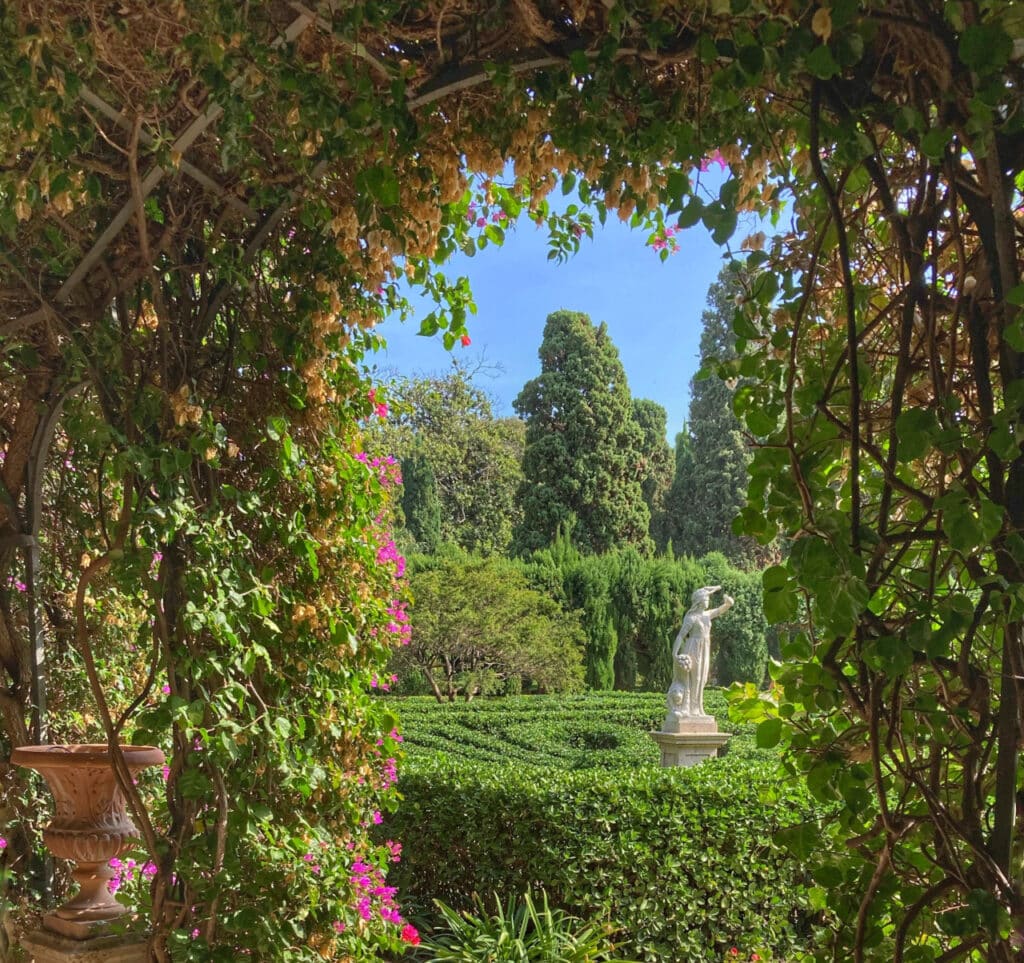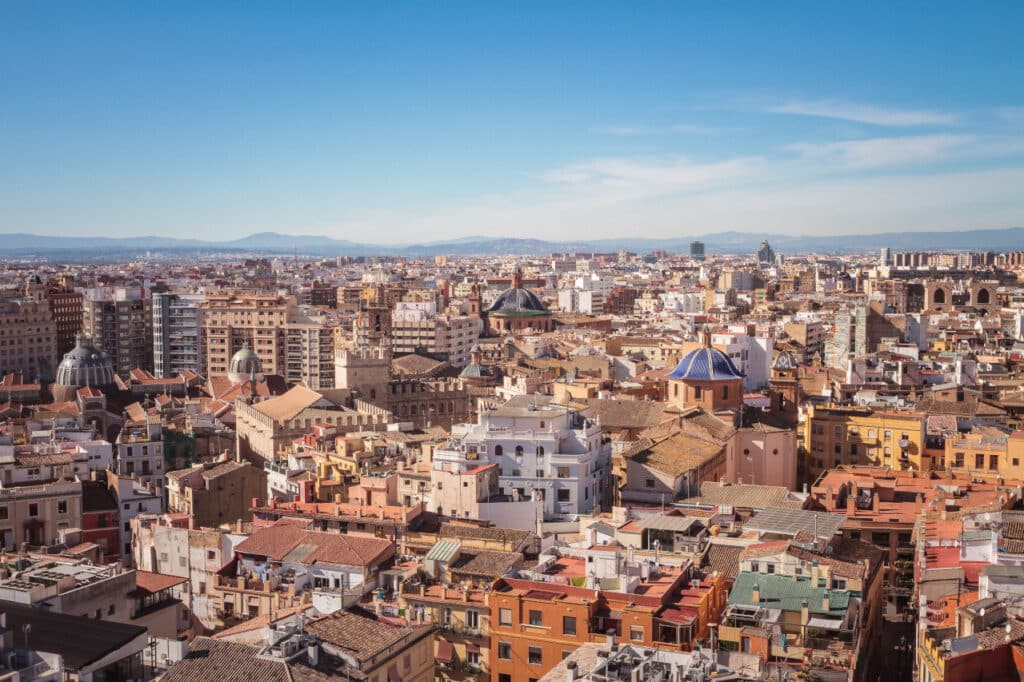Blue Domes of Valencia: A Ceramic Skyline
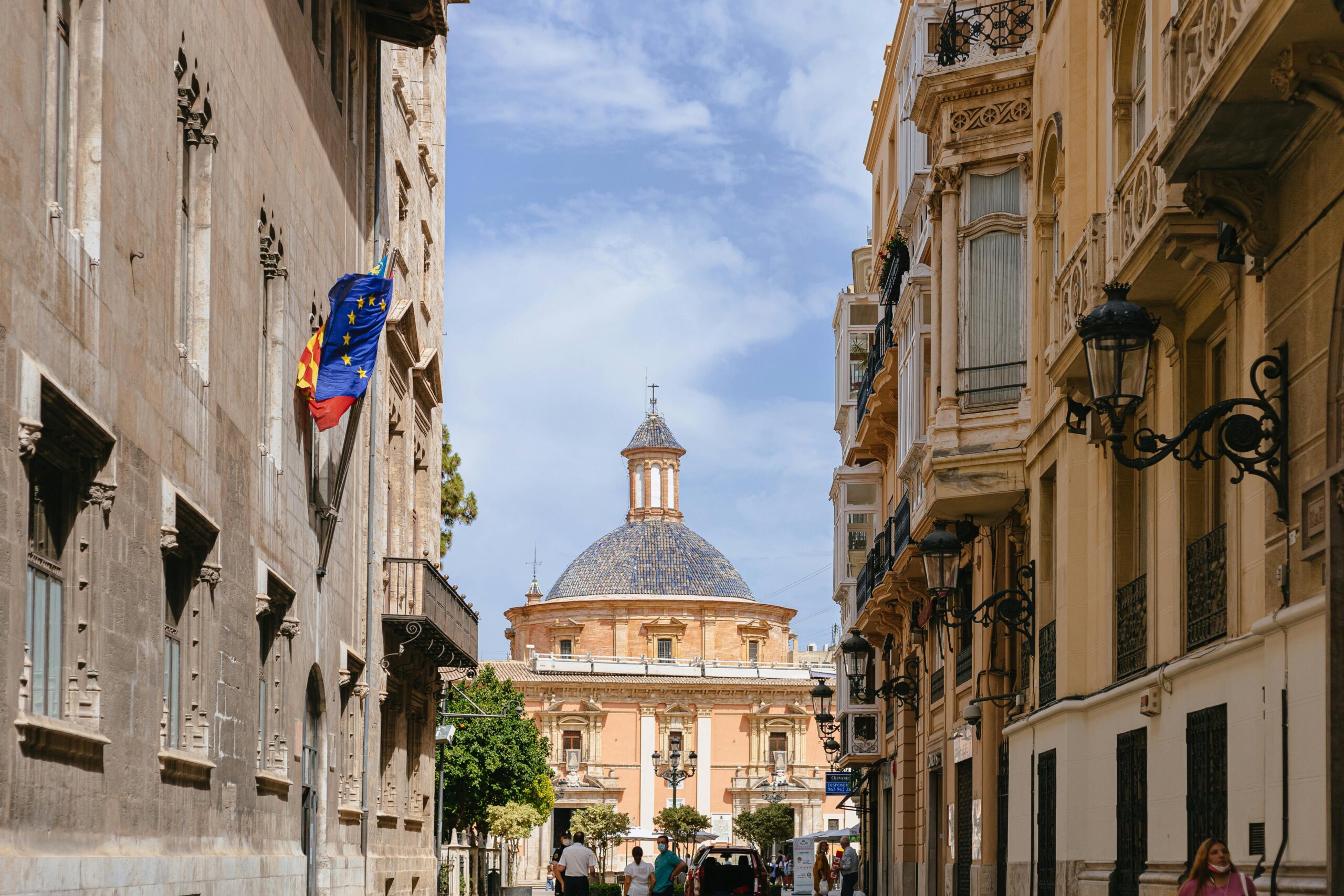
If you’ve ever looked up while wandering through Valencia, you’ve probably noticed something striking, flashes of brilliant blue glistening in the sunlight. These are Valencia’s famous blue domes, one of the city’s most recognizable architectural features and a symbol of its Mediterranean soul.
A City Crowned in Blue
Valencia is often called “the city of 100 bell towers,” but it could just as easily be known as the city of blue domes. From nearly any viewpoint, whether you’re standing in the heart of the Old Town (Ciutat Vella) or admiring the skyline from the Turia Gardens, you’ll spot these radiant domes topping churches, basilicas, and chapels.
Their deep cobalt color, made from glazed ceramic tiles, isn’t just decorative. The blue hue reflects sunlight and heat, helping to cool the interiors, a clever blend of beauty and practicality that’s typical of Valencian design.
Where to Find Valencia’s Blue Domes
You don’t need a map to find them, but here are a few must-see examples where you can admire this iconic architecture up close:
1. Basílica de la Virgen de los Desamparados
In the heart of Plaza de la Virgen, this 17th-century basilica features one of the most stunning blue domes in the city. Its soft, rounded shape contrasts beautifully with the sharp Gothic lines of the nearby Cathedral. Inside, the basilica honors the city’s beloved patron saint, Our Lady of the Forsaken.
2. Valencia Cathedral
Just steps away, the Cathedral of Santa Maria, with its famous Miguelete Tower, is another highlight. Though its main dome is more subdued in tone, the surrounding chapels and adjoining buildings showcase Valencia’s signature ceramic rooftops. Climb the tower for a panoramic view and you’ll see a sea of blue stretching across the city.
3. Iglesia de San Nicolás
Known as the Sistine Chapel of Valencia for its magnificent frescoes, San Nicolás Church also features a small but striking blue dome. From above, its tiles shimmer against the rustic tones of the old quarter, adding another jewel to Valencia’s architectural mosaic.
4. Iglesia de Santa Catalina Mártir
Located near Plaza de la Reina, this elegant church combines Gothic and Baroque elements, and, of course, a dazzling blue dome visible from many nearby streets.

A Tradition Rooted in Mediterranean Craftsmanship
The technique of covering domes with glazed ceramic tiles dates back centuries, influenced by Moorish and Mediterranean architecture. Artisans from the region perfected this craft, producing the distinctive ceramics that still decorate churches and rooftops across Valencia today.
The color blue itself holds symbolic meaning, representing the sky, the divine, and spiritual protection. Perhaps that’s why these domes feel almost heavenly when they catch the Valencian sunlight.
Manises: The Birthplace of Valencia’s Blue
The shining blue domes of Valencia owe much of their beauty to Manises, a nearby town world-famous for its ceramic tradition. Since the 14th century, Manises artisans have been handcrafting glazed tiles that once adorned palaces, churches, and homes across the Mediterranean.
The deep cobalt tone that crowns Valencia’s rooftops was born here, a color so distinctive that it became a symbol of the region. Visiting Manises today feels like stepping into an open-air ceramic workshop, where art and architecture meet under the Valencian sun.
At the Manises Ceramics Museum (Museu de Ceràmica de Manises), visitors can see centuries-old pieces and discover how the same techniques used to create household tiles and pottery were also applied to the majestic domes of Valencia’s churches. It’s a reminder that behind every sparkling rooftop lies a story of craftsmanship and cultural fusion.
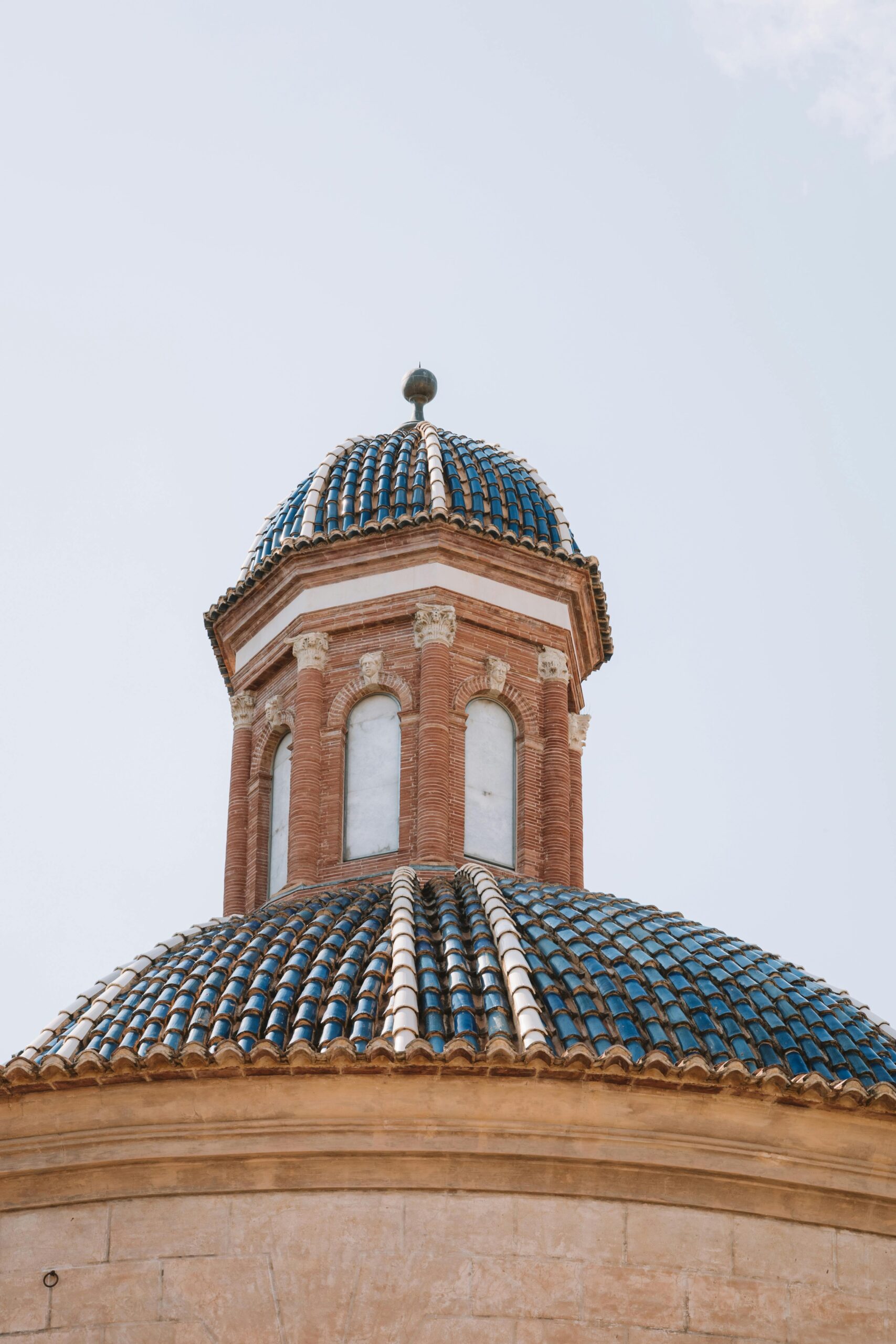
The Biggest Dome in the Valencian Community
While Valencia’s skyline is filled with blue-tiled beauty, the largest dome in the entire Valencian Community can actually be found just outside the city: in Gandia. The Col·legiata de Santa Maria de Gandia, often called La Seu de Gandia, is crowned with a magnificent blue ceramic dome that dominates the town’s skyline. Built between the 14th and 16th centuries, this grand structure reflects the same craftsmanship that defines Valencia’s domes, but on a monumental scale. Its vibrant tiles, visible from almost anywhere in Gandia, are a proud continuation of the region’s long tradition of ceramic artistry.
Best Time to See Them
For photographers and travelers, the golden hour, just before sunset, is the perfect moment. The domes glow with a soft, warm light, and the city seems to float under a watercolor sky. Rooftop bars around El Carmen or Plaza del Ayuntamiento offer fantastic views for admiring this skyline of blue and terracotta.
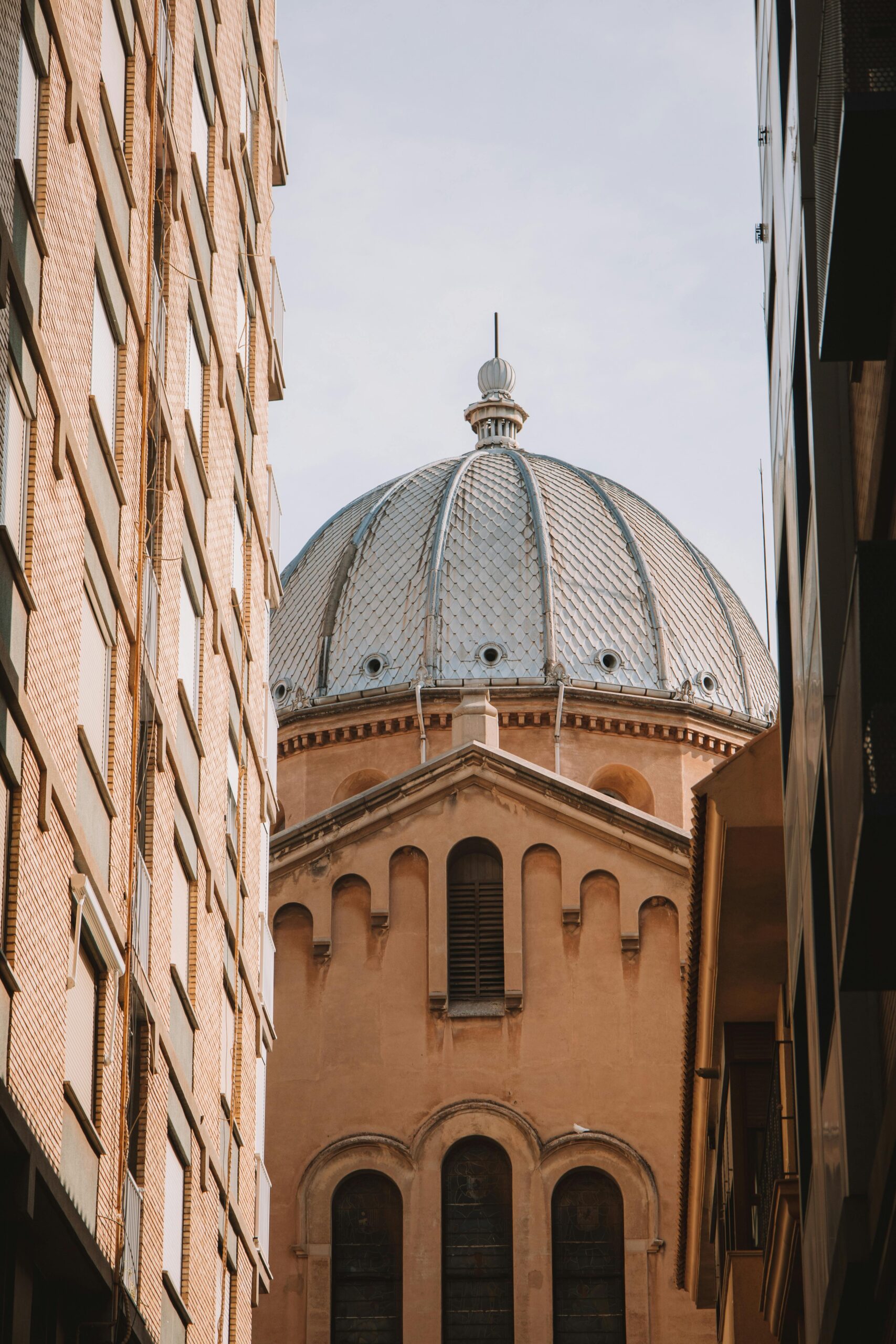
More Than Just Architecture
The blue domes of Valencia aren’t just part of the city’s skyline, they’re part of its identity. They tell stories of faith, craftsmanship, and centuries of cultural blending that make Valencia so unique.
So next time you’re here, don’t just look at what’s around you, look up. The city’s most beautiful art might just be above your head!
Want to know more about Valencia’s curiosities? Visit our website and book your next tour!




